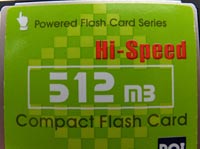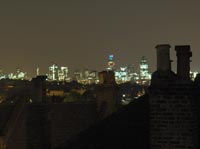HP Photosmart R817
Review Date: October 4th 2005
|
Image Quality
All of the sample images in this Review were taken using the Custom 5MP **** mode, which gives an average image size of around 1.5Mb - 2.0Mb.
Noise
There are 4 ISO settings available on the HP Photosmart R817 which you can select at any time if the camera is in Auto mode. Here are some 100% crops which show the noise levels for each ISO setting:
ISO 50 (100% crop) |
ISO 100 (100% crop) |
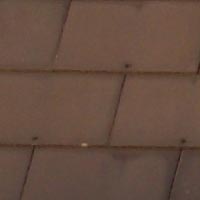 |
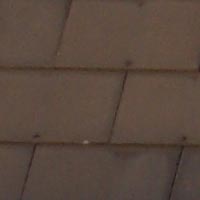 |
ISO 200 (100% crop) |
ISO 400 (100% crop) |
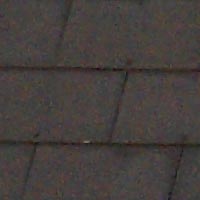 |
 |
The noise levels look fine at ISO 50, but there's already quite a lot of noise starting to appear at ISO 100 and ISOs 200 and 400 are pretty terrible. Interestingly, the R817 never seems to select ISO 400 when it is set to ISO Auto mode, maybe an indication that you should only use ISO 400 if the lighting is really poor and you have no other option.
Sharpening
Here are two 100% crops which have been Saved as Web - Quality 50 in Photoshop. The right-hand image has had some sharpening applied in Photoshop. The out-of-the camera images at the default setting of Medium are a little on the soft side with post-processing bringing out some extra detail. Alternatively you can change the Sharpness setting on the camera to High.
Original 100% Crop |
Sharpened 100% Crop |
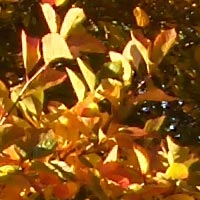 |
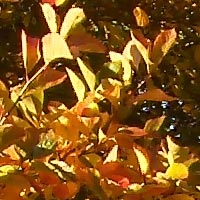 |
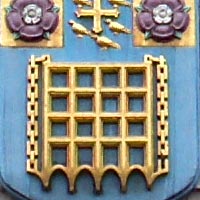 |
 |
File Quality
The HP Photosmart R817 has 6 different file quality settings available, with Custom (5MP ****) being the highest quality option. Here are some 100% crops which show the quality of the various options, with the file size shown in brackets.
|
Custom (5MP****) (1,800Kb) |
5MP *** (1,501Kb) |
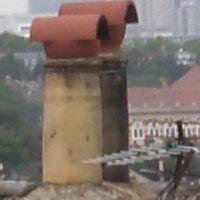 |
 |
|
5MP ** (1,084Kb) |
3MP ** (751Kb) |
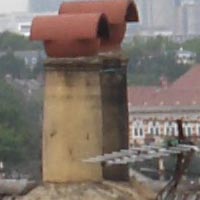 |
 |
|
1MP ** (473Kb) |
VGA ** (134kb) |
 |
 |
Chromatic Aberrations
The HP Photosmart R817 handled chromatic aberrations very well during the review. Only very high-contrast situations like those shown below caused any problems, with purple fringing present around the edges of over-exposed parts of the image.
|
Example 1 |
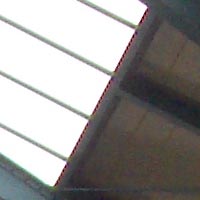 |
Macro
The HP Photosmart R817 offers a Macro setting that allows you to focus on a subject that is 12 cms away from the camera and a Super Macro setting that lets you get as close as 3 cms. The first image shows how close you can get to the subject in Super Macro mode (in this case a compact flash card). The second image is a 100% crop.
|
Macro Shot (click to view full-sized image) |
100% Crop |
Flash
The flash settings on the HP Photosmart R817 are pretty standard - Auto Flash/Flash On/Flash Off/Red-Eye/Night. These shots of a magnolia coloured wall were taken at a distance of 1.5m.
|
Flash Off - Wide Angle (36mm) |
Auto Flash - Wide Angle (36mm) |
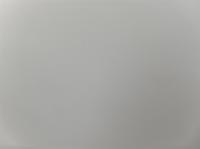 |
 |
|
Flash Off - Telephoto (180mm) |
Auto Flash - Telephoto (180mm) |
 |
 |
And here are some shots of yours truly. As you can see, neither the Flash On setting or the Red-Eye option caused any red-eye.
|
Flash On |
Flash On (100% Crop) |
 |
 |
|
Flash - Red-Eye Reduction |
Flash - Red-Eye Reduction (100% Crop) |
 |
 |
Night Shot
The HP Photosmart R817 maximum shutter speed is 16 seconds, which is very useful if you're interested in night photography. The shot below was taken with a shutter speed of 16 seconds, aperture of f/4.8 at ISO 50. I've included a 100% crop of the image to show what the quality is like.
|
Night Shot (click to view full-sized image) |
100% Crop |
 |
|
HP's Adaptive Lighting
The HP Photosmart R817 has a unique feature called Adaptive Lighting, which basically balances the shadows and highlights in a high-contrast image, for example a scene that includes deep black shadows and a bright white sky. If Adaptive Lighting is enabled, the HP Photosmart R817 takes the shot and then processes it so that some areas of the photograph are lightened and some are left as they are. There are 3 Adaptive Lighting settings - Off, Low and High. Here are some 100% crops which show the effects of each setting. Personally I prefer the second image out of the sequence, which was taken with Adaptive Lighting set to Low. The first image has very dense shadow areas, and the last one looks a little too washed out. Note that there is a side-effect - the images with adaptive lighting turned on exhibit more noise than the normal shot.
|
Adaptive Lighting - Off |
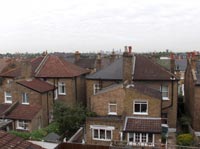 |
| Adaptive Lighting - Low |
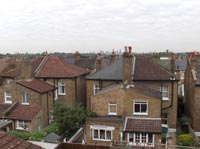 |
|
Adaptive Lighting - High |
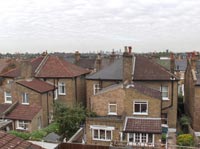 |
Overall Image Quality
The HP Photosmart R817 produced images of average quality during the review period. The 5 megapixel images were a little soft straight out of the camera at the default setting of Medium sharpening. They either require some further sharpening in an application like Adobe Photoshop, or you should set the camera to High sharpening. Personally I would set sharpening to the lowest setting (Soft) and then use Photoshop as it offers a lot more control. The HP Photosmart R817's dealt very well with chromatic aberrations, which hardly appeared in any of the test shots - limited purple fringing effects could only be seen in very high contrast situations. Macro performance has been improved with the Super Macro mode allowing you to focus as close as 3 cms away from the subject. The built-in flash worked well indoors with only a small amount of red-eye and nice overall exposure. The night photograph was well-exposed, with the maximum shutter speed of 16 seconds allowing you to take some creative shots when darkness falls, and HP's unique Adaptive Lighting feature really does make a difference to certain high-contrast situations, at the expense of making the images more noisy than usual. The HP Photosmart R817's main drawback in terms of image quality, however, is noise. The smaller image sensor used in the R817 may enable the camera to be smaller, but it comes at the cost of very noisy images even at the lower ISO settings. I was surprised at the high level of noise found in photos taken at ISO 100, which isn't exactly a fast speed, and you can even detect some noise in the shadow areas of ISO 50 images. Personally, I wish HP had made the camera larger to accomodate a larger sensor and therefore avoided the issue of noise at slow ISO speeds.
|
 PhotographyBLOG is a member of the DIWA organisation. Our test results for the HP Photosmart R817 have been submitted to DIWA for comparison with test results for different samples of the same camera model supplied by other DIWA member sites.
PhotographyBLOG is a member of the DIWA organisation. Our test results for the HP Photosmart R817 have been submitted to DIWA for comparison with test results for different samples of the same camera model supplied by other DIWA member sites.

